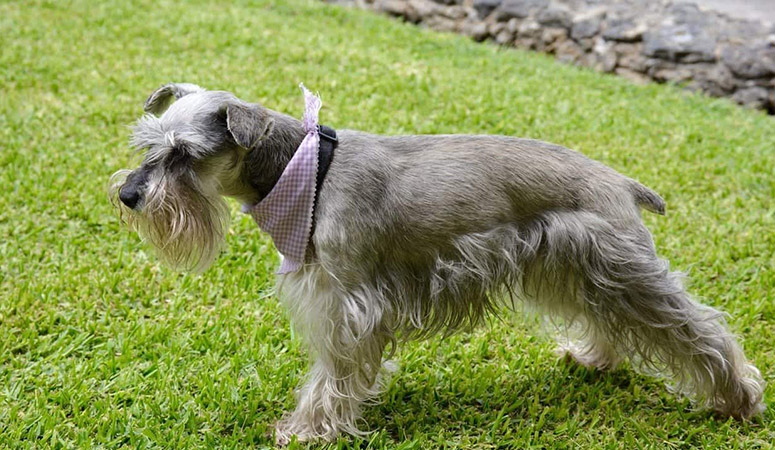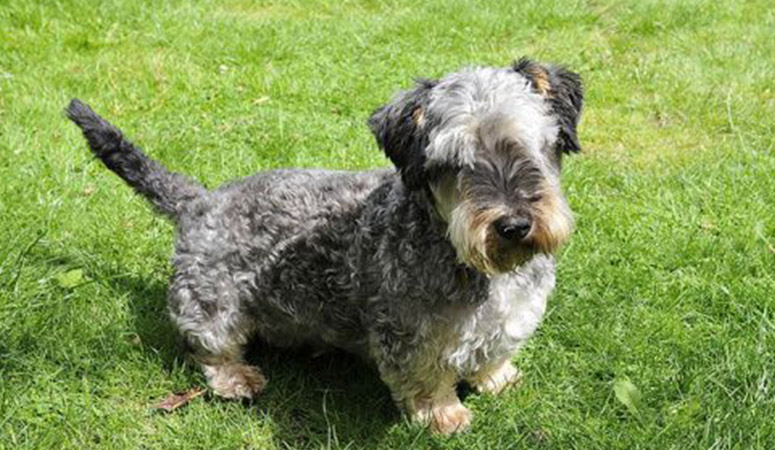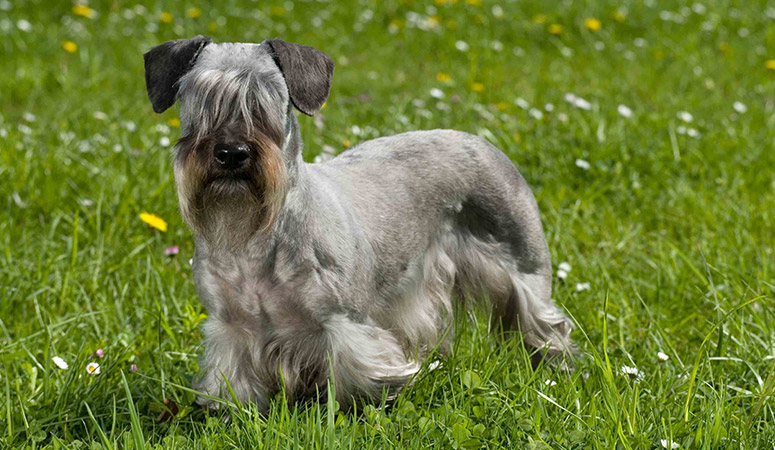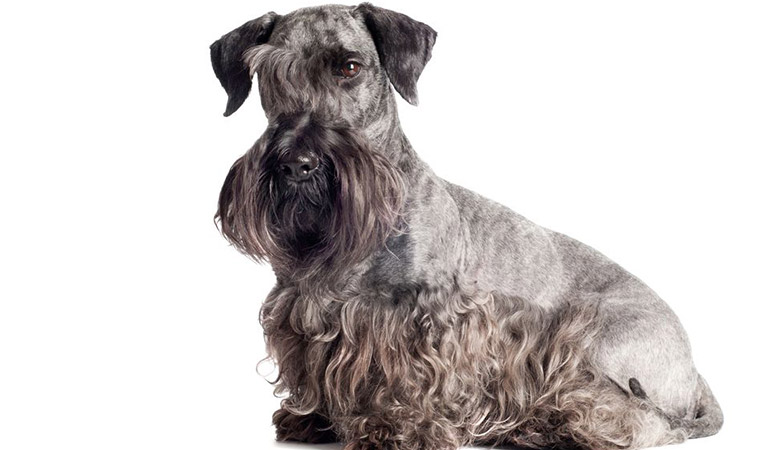Cesky Terrier
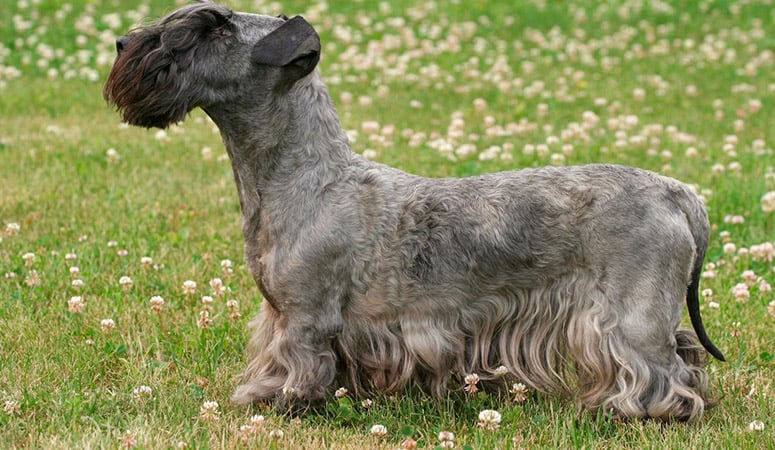
The Czech native Cesky Terrier dog breed descends from the Scottish Terrier and Sealyham Terrier, and it is the national dog of the Czech Republic. They are reputed to be less active and quieter than other terriers, and they are clever and adventurous playmates for kids and also walking companions for the folks.
| Other Names | None |
| Color | Gray |
| Height | Males: 10-13 inches. Females: 10-12 inches. |
| Weight | Males: 14-24 pounds. Females: 14-22 pounds. |
| Life Span | 12-15 years |
| Personality | Clever, Adventurous, Family-Oriented |
| Exercise | Regular Exercise |
| Origin |
| Popularity | #188 |
| Groom Needs | Weekly |
| Kids Friendly | Yes |
| Dog Friendly | Yes with supervision |
| Watch Dog | |
| Family Dog | Yes |
| Litter Size | 2-4 |
Cesky Terrier Pictures
Cesky Terrier Video
Introduction
An apt description of the Cesky Terrier should state that it is a small dog of the terrier type, stolid and well-muscled, drop-eared, and short-legged. It is longer than it is tall and has a topline that tends slightly towards the rear. They are well-balanced, calm, and affectionate. The coat is a long, fine, silky and wavy affair, which comes in one of two color varieties–shades of brown or gray, usually with markings of white, tan, light coffee, or gray. Cesky Terriers are normally born with a black coat which begins to lighten in the course of the first three years of life. In general, this dog is calm, even quieter than most other terriers.
Cesky Terriers stand 10-14 inches from shoulder to paw and weigh 15-25 pounds, regardless the gender. The American Kennel Club (AKC) classified this breed in the Terrier Group. Cesky Terriers live up to 12-15 years, on average.
Living with Cesky Terrier
The Cesky is a coated breed, so if you don’t want to put in the time for grooming you shouldn’t get one. The Cesky puppies need daily grooming, and adults must be brushed once or twice a week. And hand stripping is not suggested for this dog’s coat unlike grooming of other terrier breeds. Instead, the body is clipped. The coat should be trimmed every four to six weeks to maintain its appearance. Also, the owner needs to clean the dog’s beard after eating or drinking. A regular bath is recommended for the dog as the dog’s coat doesn’t shed dirt as some harder coats do. Ears should be cleaned regularly to remove excess wax and other debris. Brush the teeth at least once per week to keep fresh breath and prevent gum disease. Besides, trim the nails once a month if the dog does not wear down the toenails naturally.
The Cesky Terriers need moderate amounts of exercise as they are mellower than most terriers. And they enjoy daily exercise in the form of walks and play sessions with their owners. They are small but will make a fairly great jogging companion. The dog should always be on a leash when outside or free in a securely and fenced yard. Because this breed has a very strong prey drive, and if he sees or smells what he perceives as prey, the Cesky may not be able to resist running off in pursuit.
With this said, it is not suggested to give too much exercise for Cesky Terrier puppies as their joints and bones are still growing. Too much pressure on them may result in causing a dog a few problems later on in their lives.
You can ask from the veterinarian for a high-quality diet that is suitable for your dog. More importantly, the food amount should depend on the dog’s weight, size, age, and activity level. And this is a breed who loves to eat, so monitor his food intake carefully. Some dogs are easy to get overweight, so you need to watch their calorie consumption and weight level all the time. Treats may be an important aid in training, but excessive intake can lead to obesity. Also, owners need to distinguish which human food is safe for dogs and which are not. If you have any problems with your dog’s weight or diet, just consult from your veterinarian.
The Cesky Terriers are prone to the following health conditions: patellar luxation, hip dysplasia, cardiac problems, progressive retinal atrophy, cataracts, a neurological issue known as Scotty Cramp, etc.
Suggested tests:
Cardiac Exam
Dentition Exam
Patella Evaluation
Total Annual Cost: $2674
Cost is estimated for the first year and may vary depending on many factors, such as dog food, health care, leash, collar, licensing, possible fencing, crates, training and obedience classes, dog-walking, grooming, treats, toys, flea, tick, and heart-worm meds, microchips, etc.
The Cesky Terrier is considered to be a little less stubborn and thus more easily trainable than some other terrier breeds. Train the dog with the kind but firm consistency, using positive reinforcements that include food rewards and praise. As the dog responds well to positive training methods, never use a harsh or heavy-handed approach, because it may bring undesirable results. Puppies should be properly socialized to develop the amiable, outgoing personality that is characteristic of the breed. And the Cesky Terrier is active enough to compete in earthdog trials, agility, obedience, and tracking, also, he is a successful therapy dog.
History
The Cesky Terrier is a terrier dog developed in the Czech Republic in 1948. The Czech breeder and geneticist, František Horák, is credited with the creation of the breed and was reported to have employed several crosses between the Sealyham Terrier and the Scottish Terrier to attain a stable breed for the forests of Bohemia. Horák had intended to develop a perfect hunting dog with a narrow head and chest, which could bolt rats and foxes underground. A handful of sources have implicated the Dandie Dinmont Terrier and the wirehaired Dachshund in the genetic mix of the Cesky Terrier. The Cesky Terrier is the only native breed of the Czech Republic to have entered the AKC studbook.
Now recognized by a majority of kennel clubs in the English-speaking world, the Cesky Terrier was never a very popular breed. It is amongst the top ten rarest breeds in the world. It was officially accepted by the Fédération Cynologique Internationale in 1963, meaning that it could compete in international dog shows and competitions. The Cesky Terrier came into America in the 1980s, fostered by a group of breed fanciers who created a breed club, the Cesky Terrier Club of America, in 1988. This club served to promote the breed to a place of popularity. After a series of promotions, the breed was officially recognized by the American Kennel Club (AKC) in 2011. In the United Kingdom, the breed arrived in 1989 and the following year it gained a Kennel Club recognition. The Cesky Terrier is the national dog of the Czech Republic.
Helpful Information
Breed Club: THE AMERICAN CESKY TERRIER FANCIERS ASSOCIATION, INC.
Breed Club Link: https://americanceskyterrierfanciersassociation.org/
Breed Club Rescue:
Breed Club Rescue Link: http://ceskyterrierfanciers.org/wordpress1/rescue-and-placement/

